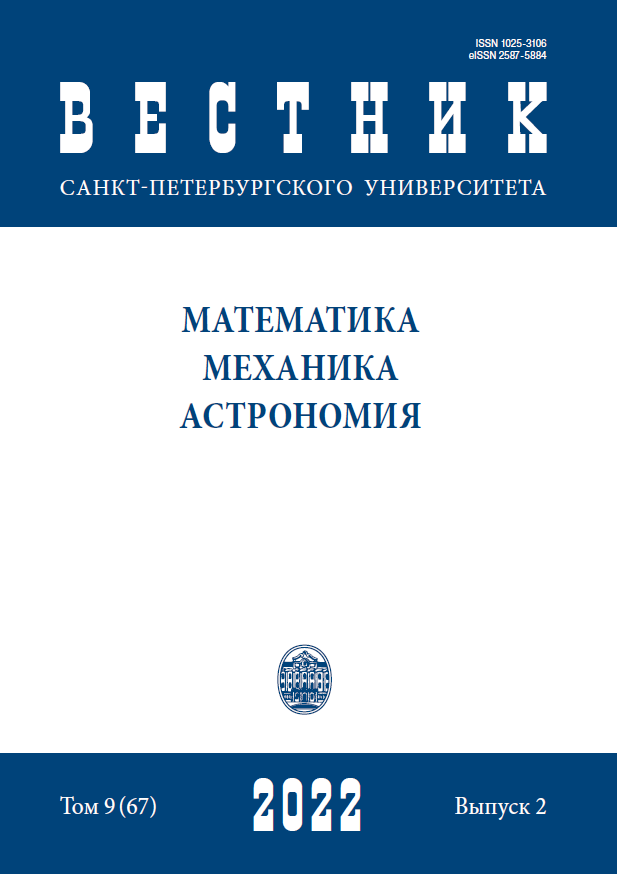Optimization of oscillation damping modes of spatial double pendulum. I. Formulation of the problem
DOI:
https://doi.org/10.21638/spbu01.2022.215Abstract
The paper discusses the issues of optimal damping of oscillations of a spatial double pendulum, whose joint axes are not collinear to each other. As options for damping, both simply passive damping associated with the influence of viscous friction, and combined passive and active damping are considered, and active influences are formed according to the principle of collinear control. The analytical solution of the system motion equations is given for both cases in the framework of the linear model, and it clearly demonstrates the damping of motions on the natural oscillation modes of the original conservative model. The optimization criteria characterizing the efficiency of the damping processes of system movements are considered. It is noted that in order to obtain the most strongly marked damping modes, the degree of stability should be maximized or the integral energy-time indicator should be minimized. In addition, the main advantages and disadvantages of these optimization criteria are discussed. This article is the basis for further research, which will be presented as a separate article “Optimization of oscillation damping modes of spatial double pendulum. II. Solving the problem and analyzing the results”.Keywords:
spatial double pendulum, viscous friction, collinear control, optimization criterion, degree of stability, energy-time criterion
Downloads
References
Литература
References
Downloads
Published
How to Cite
Issue
Section
License
Articles of "Vestnik of Saint Petersburg University. Mathematics. Mechanics. Astronomy" are open access distributed under the terms of the License Agreement with Saint Petersburg State University, which permits to the authors unrestricted distribution and self-archiving free of charge.




